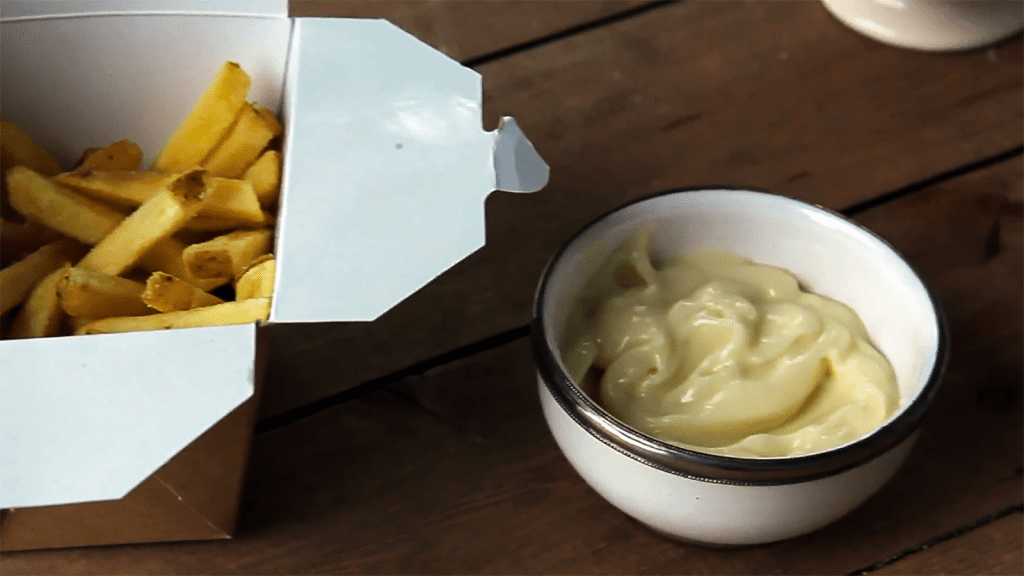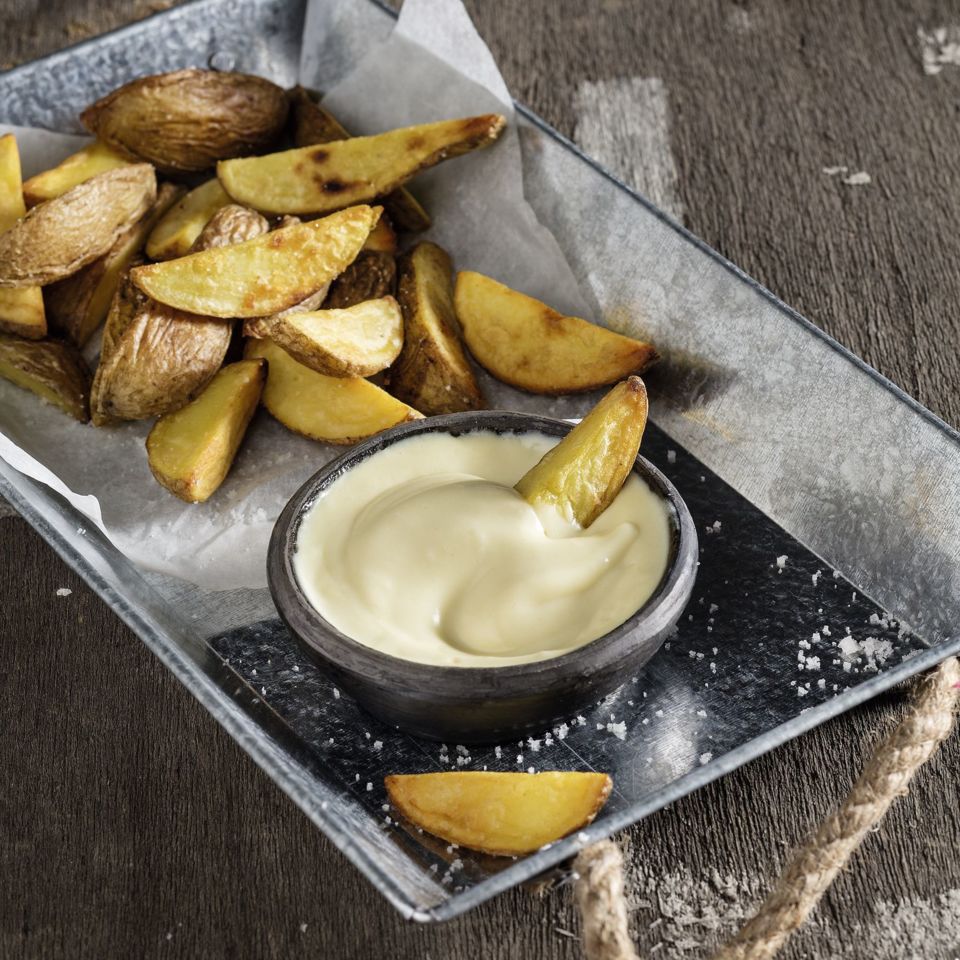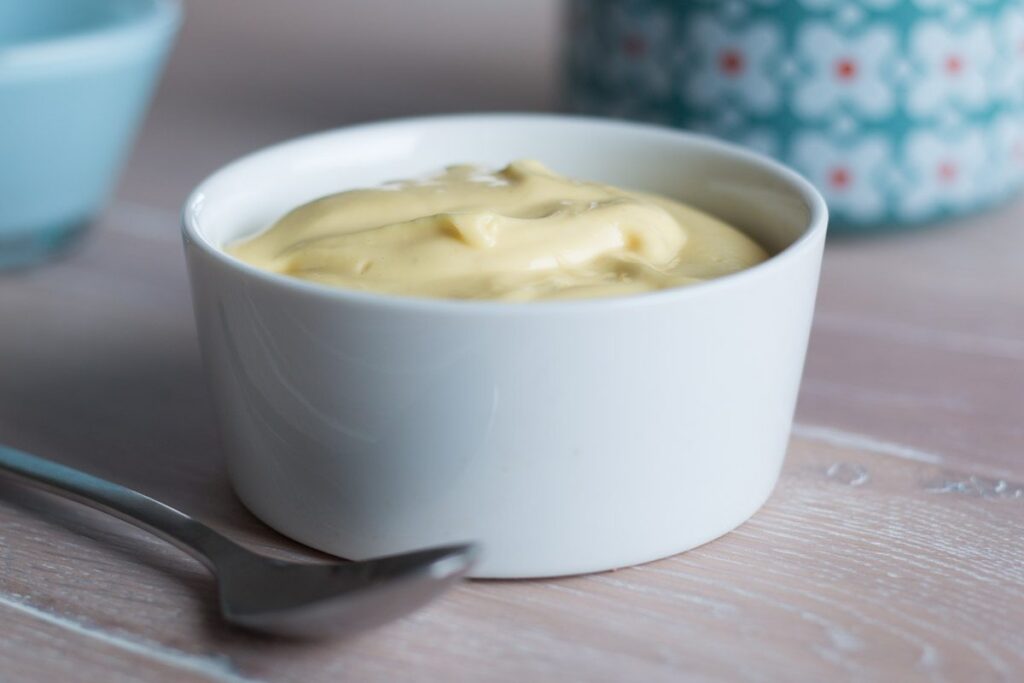Mayonnaise is a popular condiment used in many dishes and recipes, but it typically contains eggs, making it off-limits for those following a vegan diet. What’s preventing you from utilizing something unique to shape the foundation of Mayonnaise?
It turns out nothing is halting you. With the many ways of easy homemade vegan mayonnaise, you can try them without using an egg. During my Vegan Experience, the unprecedented news is that Mayo becomes a 100% veggie lover by taking out the egg.
Making your vegan mayonnaise is easier than you might think, and it allows you to enjoy the creamy, tangy goodness of mayonnaise without compromising your dietary restrictions or personal values.
Let’s get started on making some delicious, egg-free mayonnaise!
How to Make Vegan Mayonnaise in Food Processor
Vegan mayonnaise is a fantastic egg-free alternative to traditional mayo, and it can be used in various ways to enhance your meals.

To create vegan mayonnaise using a food processor, start by gathering your ingredients: 1 cup of unsweetened soy milk or another non-dairy milk of your choice, 1 cup of neutral-flavored vegetable oil (such as canola or safflower oil), 2 teaspoons of apple cider vinegar, 1 teaspoon of Dijon mustard, 1/2 teaspoon of salt, and a pinch of sugar (optional). In your food processor, combine the soy milk, apple cider vinegar, Dijon mustard, salt, and sugar. Blend these ingredients for a few seconds until well mixed.
Then, with the food processor running, gradually add the vegetable oil in a slow, steady stream. Continue processing for about 2-3 minutes until the mixture thickens and becomes creamy, resembling traditional mayonnaise. Adjust the seasoning to taste, adding more salt or vinegar if desired. Transfer your homemade vegan mayonnaise to a jar or container, and refrigerate it for at least an hour before using.
This vegan mayo is perfect for sandwiches, salads, and dipping sauces, offering a cruelty-free alternative to the classic condiment.
How to Make Vegan Mayonnaise
- Combine the plant-based milk, lemon juice vinegar, and Dijon mustard in a food processor. Blend until well mixed.
- While the food processor runs, slowly drizzle the oil steadily. This allows the mixture to emulsify and thicken.
- Continue blending until the mixture reaches a creamy and smooth consistency.
- Taste and season with salt and pepper as desired.
- Transfer the vegan mayo to a jar or container and refrigerate for at least 30 minutes to thicken further before using.
Now, you can enjoy the creamy goodness of vegan mayo in your favorite dishes, whether for sandwiches, dressings, or salads. Feel free to experiment with additional flavors and spices to customize the mayo.
Note: The results may vary due to the larger volume and different blade configurations when using a regular blender. It is recommended to use a food processor or an immersion blender for the best consistency.
How to Make Vegan Mayonnaise Easily
- Add the plant milk, apple cider vinegar or lemon juice, Dijon mustard, salt, and white pepper in a blender or food processor. Pulse the ingredients a few times to mix them.

- Adding the oil gradually ensures that it emulsifies with the other ingredients and forms a smooth and creamy texture. This process should take about 2-3 minutes.
- Once all the oil is added, continue blending the mixture for another minute until the mayonnaise is thick and creamy.

- Check the mayonnaise and add the seasonings as needed.
- Transfer the mayonnaise to a jar and store it in the refrigerator for up to two weeks.
Easy Homemade Tips for Making Vegan Mayonnaise
- Use a neutral-flavored oil to ensure that the taste of the mayonnaise is not affected by the oil’s flavor. Do not use extra virgin olive oil, as it has a strong taste that can overpower the other ingredients.
- The plant milk should be unsweetened to prevent the mayonnaise from being too sweet.

- Apple cider vinegar or lemon juice can be used interchangeably in this recipe. Both provide a tangy flavor that complements the other ingredients. (You can also add cream to add flavor if you’re a creamy lover.)
- Dijon mustard helps to emulsify the ingredients and gives the mayonnaise a subtle tangy flavor. However, you can omit it if you prefer a more basic mayonnaise flavor.
- The white pepper is optional but adds a slight heat and depth to the mayonnaise’s flavor.
- Add the oil gradually to ensure that it emulsifies with the other ingredients and forms a smooth and creamy texture. If you add the oil too quickly, the mixture may separate and become runny.
Does Vegan Mayo Taste Good?
Yes, vegan mayonnaise tastes good.
Vegan mayo, like traditional mayonnaise, can vary in taste depending on the brand and recipe. However, many people find that vegan mayo tastes quite good and is a suitable alternative to traditional mayonnaise.
Vegan mayo is typically made from plant-based ingredients such as soy milk, vegetable oil, vinegar, and various spices and seasonings. While it may have a slightly different flavor profile than regular mayo, it can still provide a creamy and tangy taste that complements sandwiches, salads, and other dishes.

Easy Homemade Vegan Mayonnaise
Ingredients
- 1/2 cup unsweetened soy milk or any other plant-based milk
- 1/2 teaspoon sugar optional
- 1/2 teaspoon salt
- 1 teaspoon Dijon mustard
- 1 teaspoon apple cider vinegar or lemon juice
- 1 cup neutral-flavored oil (such as sunflower or canola oil)
Instructions
- Add plant-based milk, apple cider vinegar or lemon juice, Dijon mustard, salt, and sugar (if using) in a bowl. Whisk or blend briefly to combine.
- Slowly drizzle in the oil while continuously whisking or blending at low speed. Adding the oil gradually to achieve a thick and creamy consistency is important.
- Continue whisking or blending until the mixture emulsifies and thickens, similar to the texture of mayo. This should take a few minutes.
- Taste the mayo and adjust the seasonings according to your preference. If desired, add more salt, mustard, or vinegar/lemon juice.
- Give it a final mix to incorporate the adjustments.

- Transfer the vegan mayo to a jar or airtight container. It can be used immediately, but refrigerate it for the best flavor and texture for at least 30 minutes to allow it to chill and thicken further.
Notes
FAQs
What is vegan Mayonnaise made of?
Traditional Mayonnaise is made with eggs, but vegan Mayonnaise is made with plant-based milk, oil, and acids, such as lemon juice or vinegar.
What kind of oil should I use to make vegan Mayonnaise?
You can use various oils to make vegan Mayonnaise, including neutral oils like canola, vegetable, grapeseed, or more flavorful oils like olive or avocado. The key is to use a light-tasting oil so that the flavor doesn’t overpower the other ingredients.
Can I use soy or non-dairy milk to make vegan Mayonnaise?
Yes! You can use plant-based milk to make vegan Mayonnaise, including soy, almond, or oat. Just use an unsweetened variety so the Mayo doesn’t taste sweet.
Do I need any special equipment to make vegan Mayonnaise?
You don’t need special equipment, but a blender or food processor can make the process easier. If you don’t have a blender, you can also whisk and mix the ingredients by hand.
How long does vegan Mayonnaise last?
Homemade vegan Mayonnaise will last for about a week in the fridge, so it’s best to make only what you need for a week at a time. If the Mayo smells or tastes off, it’s time to discard it.
Can I use vegan Mayonnaise instead of traditional Mayonnaise in recipes?
Yes! Vegan Mayonnaise can be used instead of traditional Mayonnaise in most recipes, including sandwiches, salads, and dressings. It has a similar texture and flavor so that it can be an excellent substitute for those following a plant-based diet or with egg allergies.

